
In late September 2023, police arrested a man they say ordered the murder of rap icon Tupac Shakur in 1996. This arrest comes after decades of murders and cover-up of the globally loved rapper and film star whose work at bringing peace between rival gangs threatened the CIA’s racist, imperialist drug-trafficking agenda.
After the September 29 arrest of Duane “Keefe D” Davis, the Associated Press called Davis “the last living suspect” in Tupac’s murder.
There is additional evidence lending credence to the belief that Death Row Records label director Marion “Suge” Knight, attorney Dave Kenner and security director Reggie Wright, Jr., were leading suspects in collaboration with U.S. intelligence.[1]
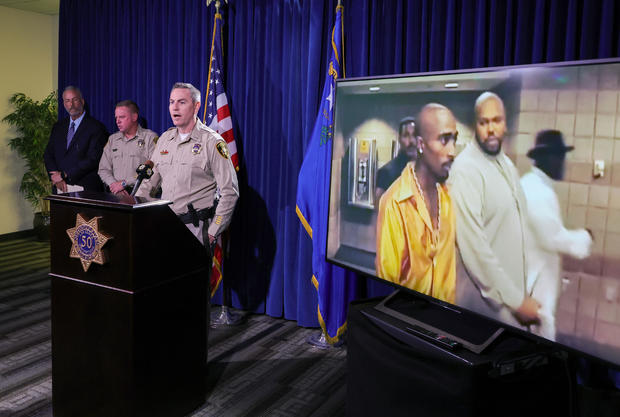
LA’s Death Row Records a CIA Front for Drug Trafficking, Opposing Gang Peace?
Tupac’s Black Panther extended family, including his Harlem Panther leader mother, Afeni Shakur, his Republic of New Afrika leader stepfather Mutulu Shakur, and his Los Angeles Black Panther leader godfather, Elmer “Geronimo” Pratt, inspired the rap icon’s activism.[2]
By the time Tupac was 17, the New Afrikan Panther Party, attempting to replicate the Black Panthers, elected him their national leader.[3]
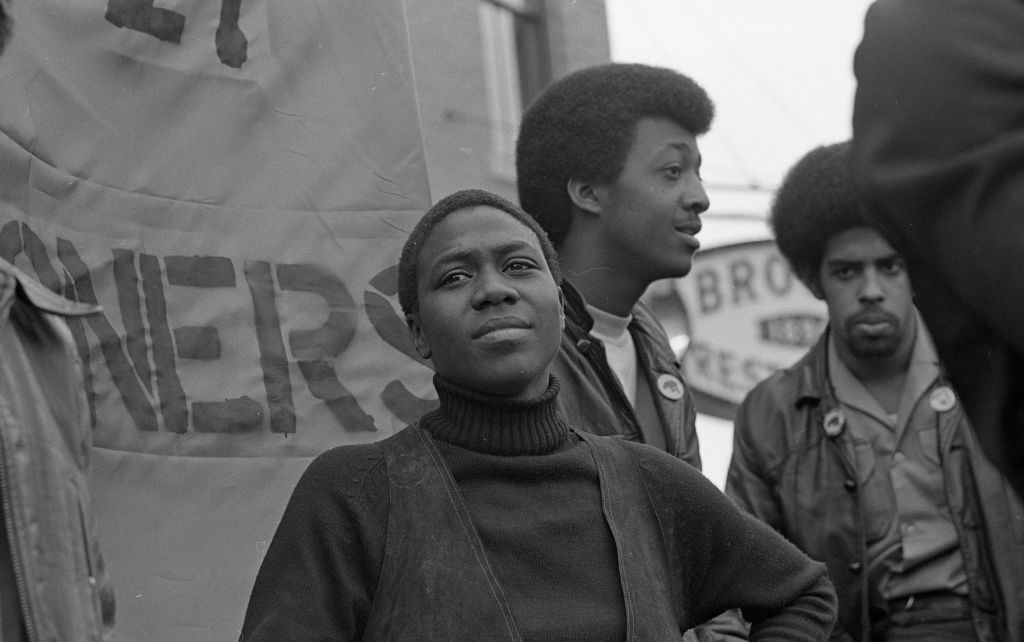
After Tupac’s major label rap debut at 21 in 1992, along with a starring film role, he took on a new activist “Thug Life” plan that had him pretending to be a “gangsta” in order to appeal to gangs and politicize them. This was part of the highly successful gang peace truce movement.[4]

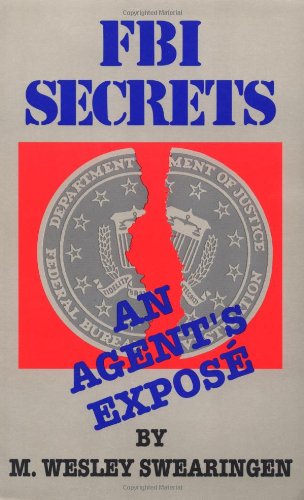
U.S. intelligence, which had used their FBI Counter Intelligence Program (COINTELPRO) to murderously target Tupac’s Black Panther extended family in the 1960s and 1970s, now appeared to target Tupac and his gang peace truce movement.[5]
Former FBI Agent Wes Swearingen reported COINTELPRO’s continuance into the 1990s.[6]
Many books and documentaries have presented the research on how CIA programs such as CHAOS and MK-ULTRA colluded with the FBI’s COINTELPRO against the Panthers.[7]
Gary Webb documented, in his viral Dark Alliance newspaper series and book, that CIA operatives trafficked cheap cocaine to “Freeway” Ricky Ross, and Death Row Records founder Michael “Harry-O” Harris was Ross’s understudy.[8]
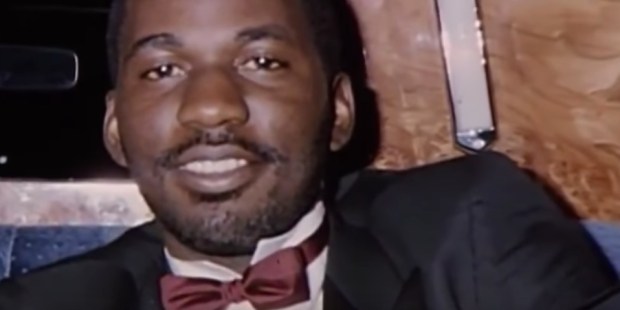
David Kenner was Harris’s lawyer and Death Row’s real owner, owning its umbrella group, Godfather Entertainment.[9]
When Harris went to prison, Kenner hired Suge Knight as the chairman, and Los Angeles Police Officer Reggie Wright, Jr., as security director, along with “dozens of other LA police officers” moonlighting under Wright.[10]
One of those officers working under Wright was Kevin Hackie, who later said that the FBI was also regularly paying him. [11]
Hackie reportedly turned on the FBI and told Tupac to avoid Las Vegas the night of his shooting there. Death Row subsequently fired Hackie, and he said the FBI set him up on false charges that had him imprisoned for a number of months.[12]
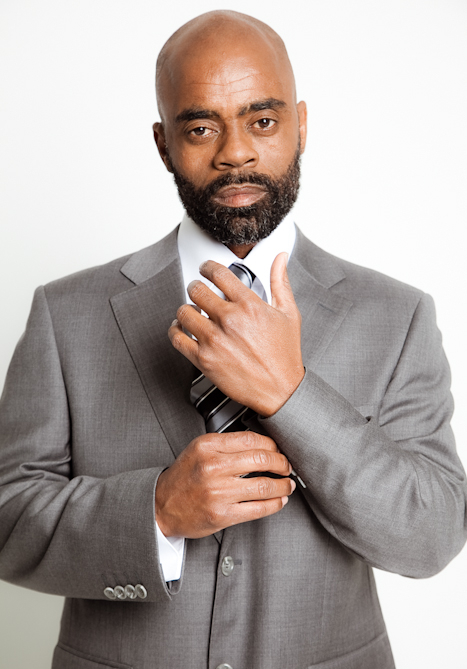
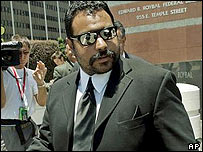
Reggie Wright, Sr., worked as head of the gang division for the Los Angeles area’s Compton Police Department, one of the first locations where the rival Bloods and Crips gangs called a truce, vowing to fight racism.[13]
As the gang truce movement spread nationwide, many of these gang members also gave up drug dealing and started legitimate businesses, taking billions of dollars of profits from the CIA drug traffickers and money launderers.[14]
Davis Arrest Part of Kading’s Unsubstantiated Conclusion of East vs. West Rap Murder
Greg Kading stated that he made “Keefe D” an offer: that the drug-dealing charge pending against him, “and the probable life sentence that came with it,” would be dropped if he gave a confession regarding Tupac’s murder.[15]
Davis stated that it was a coincidence that his nephew, Orlando Anderson, had a scuffle with Tupac and Suge Knight in the MGM Grand Hotel in Las Vegas just after a Mike Tyson fight that evening, but that he and Anderson used that opportunity to murder Tupac just two hours after the scuffle.[16]
Davis further said that rap producer Sean P-Diddy Combs offered a million dollars for Davis and some Crips gang members to kill Suge Knight and Tupac. Many media outlets report that no evidence supports this.[17]
Davis reportedly said he was in the car when he gave a gun to his nephew Orlando Anderson, who fired 13 shots at Tupac, which would prove fatal to him six days later, at the age of 25.[18]
That is quite the coincidence that young Anderson gets Mike Tyson fight tickets in Vegas, gets in a scuffle on a security camera in front of guards, showing probable cause when he purportedly ends up trying to kill Tupac and Knight, but miraculously misses the 300+ pound Suge Knight in the path of the bullets.[19]
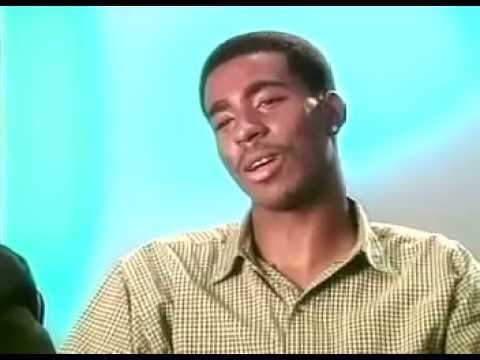
Kading said this in his book Murder Rap and to civil rights attorney Benjamin Crump, who reported that Kading’s information lacked supporting evidence and was unreliable.[20]
A gunman murdered Anderson in 1998, and Russell Poole found evidence supporting Kevin Hackie’s assertion that Death Row security director Reggie Wright, Jr., carried out that murder as Wright owned the same champagne-colored Chevy Blazer observed at the scene of that murder.[21]
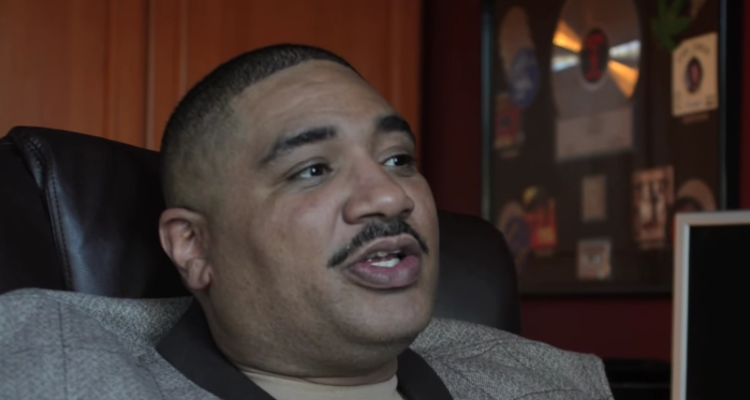
Detective Poole had also found much evidence that his fellow police officers in Death Row Records were trafficking drugs and guns.[22]
Suge Knight and others in Death Row further tried to re-start the Bloods versus Crips gang war in Los Angeles at various times, including doing so successfully after Tupac’s shooting, until activists quelled the murderous conflict again by countering Knight’s assertions that the Crips killed Tupac.[23]
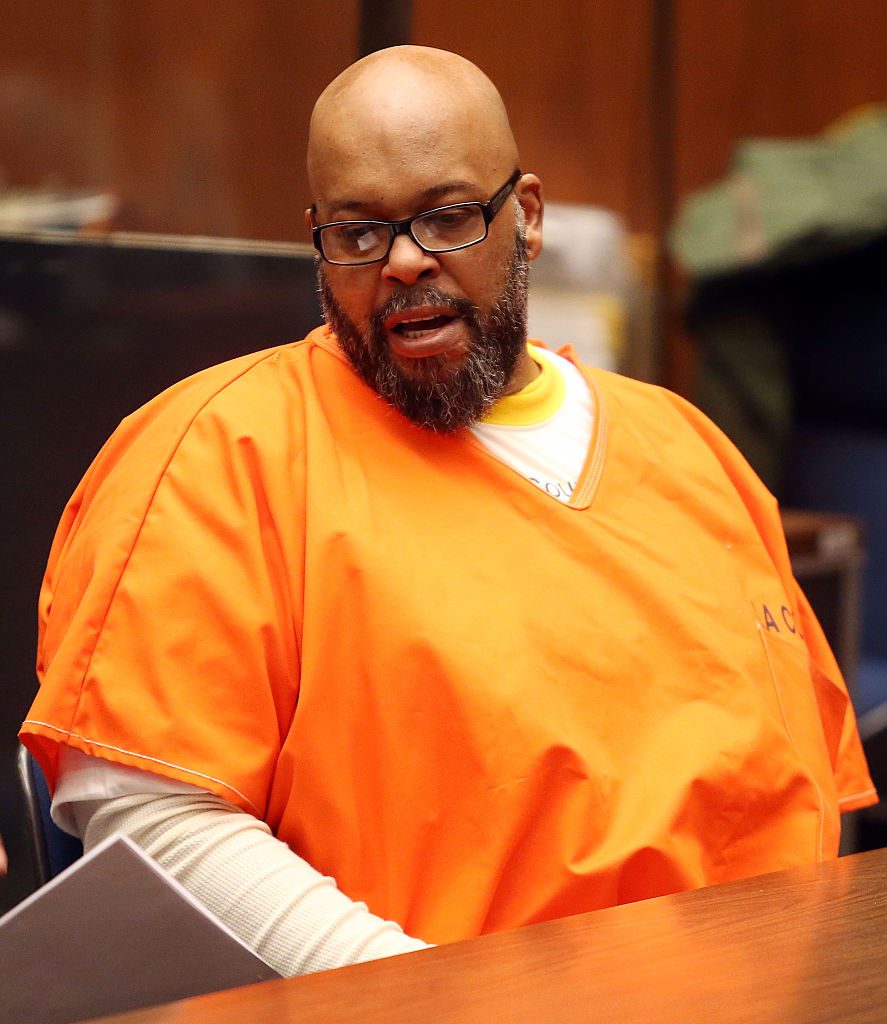
Did LAPD Murder an Ex-LA Police Detective Who Concluded They Killed Tupac?
In 1997, Los Angeles Police Department Detective Russell Poole asked to be assigned to top rapper Biggie Smalls’ murder investigation.[24]
Mainstream media had suggested that Biggie Smalls, Tupac’s former friend, and Biggie’s producer Sean “Puff Daddy” (also “Puffy” and “P-Diddy”) Combs had been in a murderous rap rivalry with Tupac Shakur and Suge Knight.[25]
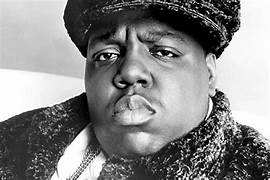
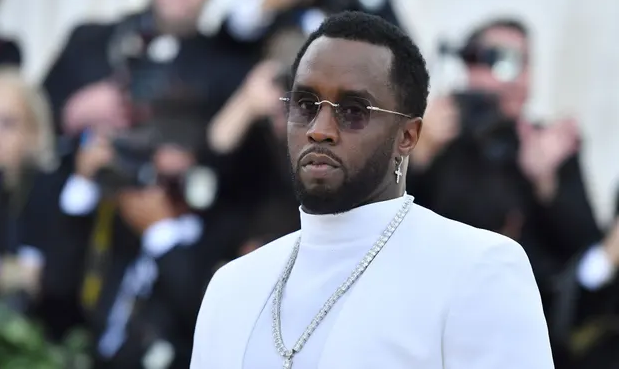
In the 1960s, the FBI’s COINTELPRO documents discussed mainstream media pushing similar “manufactured murderous rivalries” regarding Black Panther leaders, including the “East Coast versus West Coast” conflict between the New York Black Panther-leading Shakurs and National Black Panther leader Huey Newton in Oakland, California.[26]
During the Biggie Smalls murder investigation, LAPD Detective Poole found dozens of his fellow police officers involved with Death Row Records, whom his superiors referred to as “covert agents.”[27]
Poole ended up telling award-winning documentary filmmaker Nick Broomfield that he believed these officers killed Biggie Smalls to cover up their murder of Tupac Shakur.[28]
Police superiors threatened Poole for stating these findings and he resigned to get his information to the media. About a decade after Poole started his investigation, powerful forces assigned Detective Greg Kading to “re-investigate” Tupac’s murder.[29]
Poole said that Kading was brought in after leaving “the LAPD in disgrace for his false testimony on a federal murder and racketeering case… Kading never attempted to interview me.”[30]
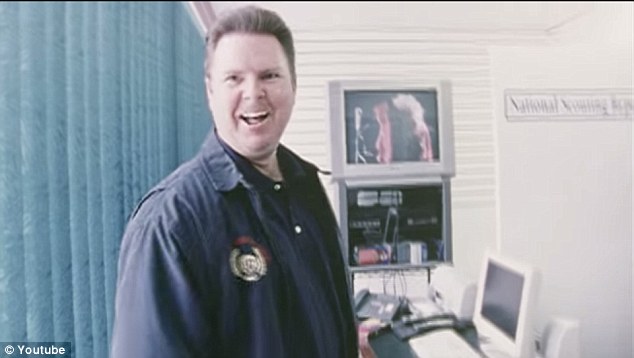
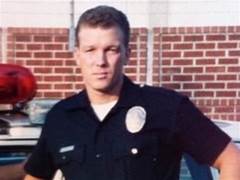
Russell Poole kept investigating the case and wrote a book with Michael Carlin before he died.[31]
Michael Carlin stated in an affidavit that, when the 58-year-old Poole set up a meeting with the LA County Sheriff to give new evidence, Reggie Wright, Jr., boasted about being present at that meeting, and that Poole was murdered there.[32]
Carlin also stated that several police choked Poole unconscious and murdered him with a defibrillator. Mainstream media restated police reports of Poole having a coincidental heart attack in their office.[33]
Cover-up of Tupac’s Murdered Comrades and Rap Murders En Masse
The arrest of Duane “Keefe D” Davis and his upcoming trial mark the most recent episode in the nearly three decades of cover-up of Tupac Shakur’s murder.
Evidence supports that U.S. intelligence also murdered Tupac’s back-up rapper, Yafeu Fula (Yaki Kadafi), the main witness to Tupac’s murder and the son of Bronx Black Panther leader Sekou Odinga and Panther Yaasmyn Fula.[34]
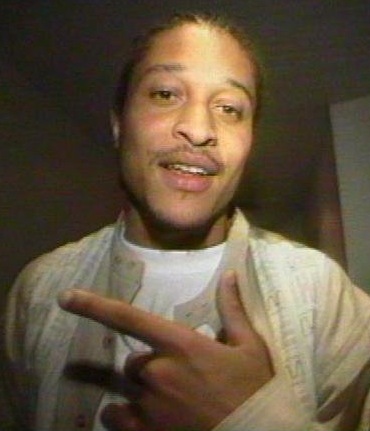
At the same time as Tupac’s murder, his close comrade and bodyguard Yakhisizwe Tyehimba, son of Tupac’s mentor, Black Panther Watani Tyehimba, turned up dead.[35]
Filmmaker Broomfield had said in his 2002 film Biggie & Tupac that a bipartisan Senate subcommittee was formed in 1993 out of concern over rap’s alleged subversive elements. He also said that the FBI was spying on rappers that year.[36]
Furthermore, in 2004, the Miami Herald revealed that, by the summer of 2001, a New York police unit trained the Miami police, the Los Angeles police and other major cities’ police departments to focus on rappers. Two rappers were murdered in Miami soon after that police training.[37]
Journalist Dasun Allah interviewed New York Police Department rap unit whistleblower Derrick Parker and stated that Parker was trained in the FBI’s COINTELPRO tactics.[38]
Police foul play continued regarding a massive number of other rappers who started turning to activism, including the late Run DMC DJ “Jam Master” Jay Mizell, Sean “P. Diddy” Combs, the late Wu-Tang Clan frontman Russell “ODB” Jones, the late Earl “DMX” Simmons, and the late Ermias “Nipsey Hussle” Asghedom, Dead Prez and The Coup. A number of these rappers were on the New York police rap unit intelligence list.[39]
While there are various lists of murdered rappers, one includes a very conservative listing of 58 rappers murdered starting in December 1993, after the Senate hearing on rappers.[40]
A more expansive list of rappers who were fatally shot includes 211 murdered just between January 2020 and the end of November 2022.[41]
As people around the world paid tribute to Tupac—from a statue in Germany to murals and t-shirt wearing freedom fighters in Africa—it is hoped that Tupac will inspire widespread anti-imperialist struggle despite the continuation of this pro-imperialist cover-up.[42]

-
https://apnews.com/article/tupac-shakur-killing-duane-keefe-davis-vegas-3f7050c2a68813d86a96b96fbb3f1d1a ↑
-
Ward Churchill and Jim Vander Wall, Agents of Repression (Boston: South End Press, 1990), p. 79. https://time.com/6282004/afeni-shakur-black-women-liberation-legacy/#:~:text=She%20and%20the%20section%20leader,rent%20strikes%20against%20exploitative%20landlords ↑
-
https://hiphopdx.com/news/id.40775/title.tupacs-secret-work-with-the-bloods-the-crips; also, personal interview with Tupac’s ex-Panther manager Watani Tyehimba, May 2, 2002. ↑
-
Ward Churchill and Jim Vander Wall, The COINTELPRO Papers: Documents from the FBI’s Secret Wars Against Dissent in the United States (Boston: South End Press, 1990), pp. 160-61. Michael Newton told how this was turned into an East vs. West Panther war, Michael Newton, Bitter Grain: Huey Newton and the Black Panther Party (Los Angeles: Holloway House, 1980), p. 203. For FBI manipulation of the media in this regard, see copy of FBI memoranda dated July 7, 1968, and August 5, 1968, in which Albany, NY, comments on Miami’s success with a television station’s Panther coverage that was sent to approximately 40 other cities’ offices. Also see October 10, 1968, memorandum. The COINTELPRO Papers, pp. 118-19 and 127. ↑
-
https://www.amazon.com/FBI-Secrets-M-Wesley-Swearingen/dp/0896085015 ↑
-
See for example, former CIA agent John Stockwell’s statements on CIA manipulation of Huey Newton in Lee Lew Lee, All Power to the People (documentary, 1996). Also see Jack Olsen, Last Man Standing: The Tragedy and Triumph of Geronimo Pratt (New York: Anchor Books, 2001). One historian said the New York City Police Department’s Bureau of Special Services (BOSS) unit which targeted Afeni Shakur, was known amongst Intelligence as “the little FBI and the little CIA.” Frank Donner, Protectors of Privilege (Berkeley: University of California Press, 1990), p. 155. ↑
-
On Harris as Ross understudy, Gary Webb, Dark Alliance: The CIA, the Contras, and the Crack Cocaine Explosion (New York: Seven Stories, 1998), p. 148. On CIA General Inspector report on CIA drug trafficking, Dale Russakoff, “Shifting Within Party to Gain His Footing,” The Washington Post, A1, A8, July 26, 2004. On Harris as Death Row Records’ silent partner, Ronin Ro, Have Gun Will Travel: The Spectacular Rise and Violent Fall of Death Row Records (New York: Doubleday, 1998), pp. 76-80. ↑
-
On Harris as silent partner but owner of umbrella company Godfather Entertainment, Ro, Have Gun Will Travel, pp. 76-80. ↑
-
Police Detective Russell Poole said this on film in Nick Broomfield, Biggie & Tupac (documentary, Lions Gate Entertainment, 2002), as well as Randall Sullivan, LAbyrinth: A detective investigates the murders of Tupac Shakur and Notorious B.I.G., the implications of Death Row Records’ Suge Knight, and the origins of the Los Angeles Police Scandal (New York: Atlantic Monthly, 2002). See https://www.youtube.com/watch?v=ldfJ2jf3mKY ↑
-
https://www.tmz.com/2007/10/20/tupacs-former-bodgaurd-i-was-undercover-fbi/#:~:text=During%20a%20Q%26A%20screening%20for,died%20on%20September%2013%2C%201996. Also see https://www.youtube.com/watch?v=Y5-uCG9Bj0Q starting at 3:00. ↑
-
Sullivan, LAbyrinth, pp. 192-93. Hackie said authorities set him up for that arrest in Broomfield’s Biggie & Tupac. ↑
-
Sullivan, LAbyrinth, pp. 161-62. On Wright, Sr., as Gang chief, see Biggie & Tupac. On Wright, Jr., working with his father on Compton police force, Sullivan, LAbyrinth, p. 191. ↑
-
Regarding the gang peace truce movement, Mike Davis, “In L.A., Burning All Illusions,” The Nation, June 1, 1992, p. 745. Mike Davis, “Who Killed LA? A Political Autopsy” New Left Review, 197/1993, pp. 7 and 34-35. Personal interview, Watani Tyehimba, October 17, 2002. Jesse Katz, “Man Freed in Death of Gang Leader: Courts: Rodney Compton is to get one year probation in the slaying of Tony Bogard, who helped reach a truce between the Crips and Bloods,” Los Angeles Times, June 1, 1994, p. 3. On gang conversions and stopping drug dealing, Black & Gold: The Latin King and Queen Nation, Big Noise Films, 1999. David C. Brotherton and Luis Barrios, The Almighty Latin King and Queen Nation: Street Politics and the Transformation of a New York City Gang (New York: Columbia University Press, 2004). https://www.amazon.com/Almighty-Latin-King-Queen-Nation/dp/0231114192 On costing CIA and money launderers billions of dollars, see Rajeev Syal, “Drug money saved banks in global crisis, claims UN advisor, The Guardian https://www.theguardian.com/global/2009/dec/13/drug-money-banks-saved-un-cfief-claims. See Wall Street insider Catherine Austin Fitts explain link between gangs and billions of dollars here: https://www.narconews.com/Issue15/narcodollars2.html ↑
-
Greg Kading, Murder Rap: The Untold Story of the Biggie Smalls & Tupac Shakur Murder Investigations by the Detective Who Solved Both Cases (One Time Publishing, 2011), p. 120, kindle edition. https://read.amazon.com/?asin=B005SGYSWM&_encoding=UTF8&ref=dbs_p_ebk_r00_pbcb_rnvc00 ↑
-
Also see Kading, Murder Rap, pp. 154-55. Kindle edition. https://read.amazon.com/?asin=B005SGYSWM&_encoding=UTF8&ref=dbs_p_ebk_r00_pbcb_rnvc00 ↑
-
https://slate.com/news-and-politics/2023/10/keffe-d-arrest-explained-why-took-so-long.html ↑
-
Also see Kading, Murder Rap, pp. 154-55. Kindle edition. https://read.amazon.com/?asin=B005SGYSWM&_encoding=UTF8&ref=dbs_p_ebk_r00_pbcb_rnvc00
Kading, Murder Rap, pp. 156-57, Kindle edition. https://read.amazon.com/?asin=B005SGYSWM&_encoding=UTF8&ref=dbs_p_ebk_r00_pbcb_rnvc00 ↑
-
Also see Kading, Murder Rap, pp. 154-55. Kindle edition. https://read.amazon.com/?asin=B005SGYSWM&_encoding=UTF8&ref=dbs_p_ebk_r00_pbcb_rnvc00 ↑
-
Of the many researchers’ insistence of Knight’s not getting directly hit by a bullet, see Sullivan, LAbyrinth, Biggie and Tupac, and award-winning Las Vegas Sun reporter Cathy Scott, The Killing of Tupac Shakur (Las Vegas: Huntington Press, 2002), p. 8. Knight’s walking around fine a day or two later attests to no direct shots hitting him. For their approximate weights, see his prison identity card in Tupac Shakur (Jacob Hoye and Karolyn Ali, Eds.), Tupac: Resurrection, 1971-1996, p. 152, where it also lists him as 5’11”. For Knight, he is listed as 6’4” and 330 lbs. Cathy Scott, The Murder of Biggie Smalls (New York: St. Martin’s, 2000), p. 52. Also see https://www.newyorker.com/magazine/1997/07/07/the-takedown-of-tupac
Episode 2 Title: East Coast vs West Coast © COPYRIGHT A&E TV 2017 “Who Killed Tupac?” https://www.youtube.com/watch?v=7KlvoH7msAM&t=17s ↑
-
Sullivan, LAbyrinth, p. 193. ↑
-
On Death Row drug trafficking, Sullivan, LAbyrinth, pp. 40, 124, 169-70 and 191. Police Detective Russell Poole said this on film in Biggie and Tupac, https://www.youtube.com/watch?v=Y5-uCG9Bj0Q starting at 3:00. ↑
-
Sullivan, LAbyrinth, pp. 141-43 and 145. Poole said that another police informant claimed that Knight delivered an entire load of AK-47 assault rifles to Bloods gang members at the Nickerson Gardens housing project in LA the night after Tupac was shot. The following night, the Bloods versus Crips violence started. It began with shootings of Compton Crip leaders within a 5-10 minute drive of the Nickerson Gardens Bloods. ↑
-
https://www.pbs.org/wgbh/pages/frontline/shows/lapd/interviews/poole.html ↑
-
https://apnews.com/article/tupac-shakur-keffe-rap-rival-notorious-big-2567b97c8d1542fe6c7a0804aaa2b386 ↑
-
https://www.nytimes.com/1971/02/10/archives/newton-denounces-2-missing-panthers-newton-denounces-2-missing.html; also see copies of FBI memoranda dated February 2, 1971, sent to some 30 offices that attempts to split Newton and Cleaver as well as an Airtel memo that attempts to split Newton and Afeni Shakur’s New York Panther 21, Churchill and Vander Wall, The COINTELPRO Papers, pp. 160-61. Michael Newton told how this was turned into an East vs. West Panther war, Bitter Grain, p. 203. For FBI manipulation of the media in this regard, see copy of FBI memoranda dated July 7, 1968, and August 5, 1968, in which Albany, NY comments on Miami’s success with a television station’s Panther coverage that was sent to approximately 40 other cities’ offices. Also see October 10, 1968 memorandum. The COINTELPRO Papers, pp. 118-19 and 127. ↑
-
Sullivan, Labyrinth; Poole lists many of the cops’ names working at Death Row Records throughout this book. On “covert agents,” Sullivan, LAbyrinth, p. 166. ↑
-
See end of this trailer for clip of Broomfield stating Poole’s statement of this at 3:18. https://www.youtube.com/watch?v=0MamdDXe5fs ↑
-
On Poole’s resignation after implicating his fellow cops, see Sullivan, LAbyrinth, pp. 235-38. Kading, https://fortune.com/2023/09/30/arrest-tupac-shakur-murder-notorious-big-investigation-lapd/ ↑
-
https://www.amazon.com/Murder-Rap-Untold-Investigations-Detective/product-reviews/0983955484/ref=cm_cr_getr_d_paging_btm_next_2?ie=UTF8&reviewerType=all_reviews&pageNumber=2&filterByStar=critical ↑
-
https://www.amazon.com/Tupac-187-Richard-RJ-Bond/dp/0692317848 ↑
-
https://centurycity.news/the-story-of-suge-knight-and-russell-poole-p1215-217.htm ↑
-
Personal interview with Michael Carlin, December 2, 2015. ↑
-
https://www.amazon.com/Homicide-Yafeu-Yaki-Kadafi-Fula/dp/1733140026 ↑
-
Personal interview with Watani Tyehimba, March 10, 2003. Also see John Potash, Drugs as Weapons Against Us (Portland, OR: Trine Day, 2015), p. 364, kindle edition. https://read.amazon.com/?asin=B00XTAT3W4&_encoding=UTF8&ref=dbs_p_ebk_r00_pbcb_rnvc00 and https://www.youtube.com/watch?v=3aFubvxGMuI ↑
-
“Politicians…year.” Biggie & Tupac. Broomfield had previously won a best documentary award at the Sundance Film Festival. ↑
-
“Events support…owner.” Nicole White and Evelyn McDonnell, “Police Secretly Watching Hip-Hop Artists,” Miami Herald, March 9, 2004, p. 1A. http://www.hartford-hwp.com/archives/45a/680.html ↑
-
Dasun Allah and Joshua Fahiym Ratcliffe, “Law and Disorder,” The Source, June 2004, p. 44. ↑
-
Andrew Lee and Carl Swanson, “NYPD Raps,” New York Magazine, April 30, 2001, p. 13. Also see https://andscape.com/features/nipsey-hussle-rapper-shot-killed-at-33/ www.speakoutnow.org/People/BootsRiley.html On Jackson and his murder, see Houston Williams, “Paris Not Dead, Member of The Coup Killed,” November 17, 2005, www.allhiphop.com/hiphopnews Also: https://www.democracynow.org/2003/10/29/headlines/hip_hop_group_dead_prez_to_sue_nypd_over_arrest and https://www.google.com/books/edition/The_FBI_War_on_Tupac_Shakur/rdNAEAAAQBAJ?hl=en [NOTE: I cannot find the Lee/Swanson article.] ↑
-
https://en.wikipedia.org/wiki/List_of_murdered_hip_hop_musicians ↑
-
https://defendernetwork.com/culture/celebrity/rappers-killed-by-gun-violence/ ↑
-
https://makaveli-immortalized.tumblr.com/post/19498177067 and https://www.huffpost.com/entry/2pac-and-africa_b_9565202 ↑
CovertAction Magazine is made possible by subscriptions, orders and donations from readers like you.
Blow the Whistle on U.S. Imperialism
Click the whistle and donate
When you donate to CovertAction Magazine, you are supporting investigative journalism. Your contributions go directly to supporting the development, production, editing, and dissemination of the Magazine.
CovertAction Magazine does not receive corporate or government sponsorship. Yet, we hold a steadfast commitment to providing compensation for writers, editorial and technical support. Your support helps facilitate this compensation as well as increase the caliber of this work.
Please make a donation by clicking on the donate logo above and enter the amount and your credit or debit card information.
CovertAction Institute, Inc. (CAI) is a 501(c)(3) non-profit organization and your gift is tax-deductible for federal income purposes. CAI’s tax-exempt ID number is 87-2461683.
We sincerely thank you for your support.
Disclaimer: The contents of this article are the sole responsibility of the author(s). CovertAction Institute, Inc. (CAI), including its Board of Directors (BD), Editorial Board (EB), Advisory Board (AB), staff, volunteers and its projects (including CovertAction Magazine) are not responsible for any inaccurate or incorrect statement in this article. This article also does not necessarily represent the views the BD, the EB, the AB, staff, volunteers, or any members of its projects.
Differing viewpoints: CAM publishes articles with differing viewpoints in an effort to nurture vibrant debate and thoughtful critical analysis. Feel free to comment on the articles in the comment section and/or send your letters to the Editors, which we will publish in the Letters column.
Copyrighted Material: This web site may contain copyrighted material the use of which has not always been specifically authorized by the copyright owner. As a not-for-profit charitable organization incorporated in the State of New York, we are making such material available in an effort to advance the understanding of humanity’s problems and hopefully to help find solutions for those problems. We believe this constitutes a ‘fair use’ of any such copyrighted material as provided for in section 107 of the US Copyright Law. You can read more about ‘fair use’ and US Copyright Law at the Legal Information Institute of Cornell Law School.
Republishing: CovertAction Magazine (CAM) grants permission to cross-post CAM articles on not-for-profit community internet sites as long as the source is acknowledged together with a hyperlink to the original CovertAction Magazine article. Also, kindly let us know at info@CovertActionMagazine.com. For publication of CAM articles in print or other forms including commercial internet sites, contact: info@CovertActionMagazine.com.
By using this site, you agree to these terms above.
About the Author
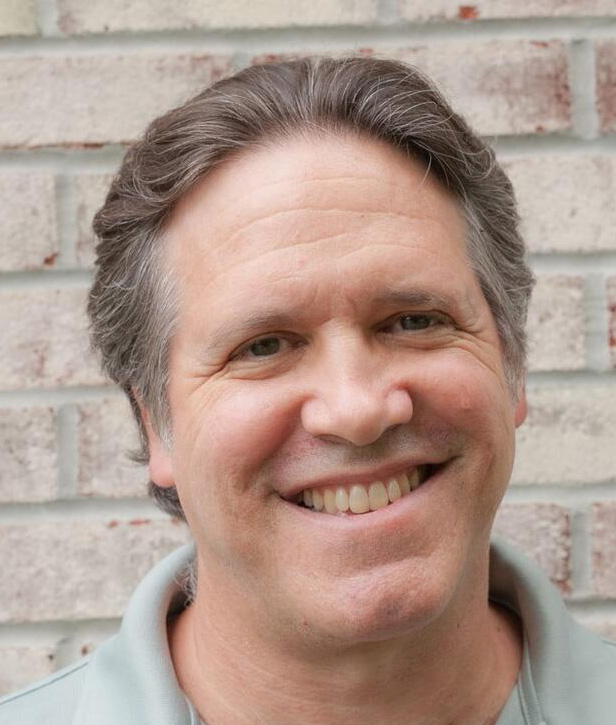
John Potash is the author of the books and films: The FBI War on Tupac Shakur (2nd ed), Drugs as Weapons Against Us: The CIA War on Musicians and Activists, and Shots: Eugenics to Pandemics (2022). His latest film is CIA Drugs R Us! A Drugs as Weapons… Sequel (2024) which reviews CHAOS in light of other CIA operations. John’s work can be found at johnpotash.com and he can be reached at: jlpotash@gmail.com.

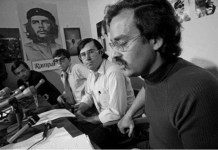
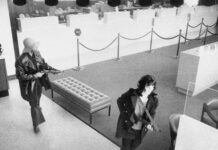
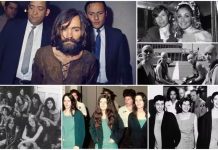
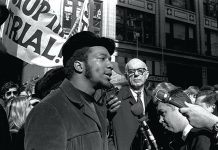


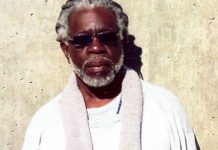
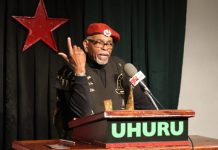
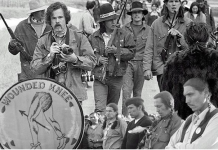

In response to “Murphy,” here’s a long section discussing U.S. intelligence numerous times: “U.S. intelligence, which had used their FBI Counter Intelligence Program (COINTELPRO) to murderously target Tupac’s Black Panther extended family in the 1960s and 1970s, now appeared to target Tupac and his gang peace truce movement.[5]
Former FBI Agent Wes Swearingen reported COINTELPRO’s continuance into the 1990s.[6]
Many books and documentaries have presented the research on how CIA programs such as CHAOS and MK-ULTRA colluded with the FBI’s COINTELPRO against the Panthers.[7]
Gary Webb documented, in his viral Dark Alliance newspaper series and book, that CIA operatives trafficked cheap cocaine to “Freeway” Ricky Ross, and Death Row Records founder Michael “Harry-O” Harris was Ross’s understudy.[8]
Michael “Harry-O” Harris, 58, is scheduled to be released in 2028, according to prosecutors.
Michael “Harry-O” Harris [Source: mercurynews.com]
David Kenner was Harris’s lawyer and Death Row’s real owner, owning its umbrella group, Godfather Entertainment.[9]
When Harris went to prison, Kenner hired Suge Knight as the chairman, and Los Angeles Police Officer Reggie Wright, Jr., as security director, along with “dozens of other LA police officers” moonlighting under Wright.[10]
One of those officers working under Wright was Kevin Hackie, who later said that the FBI was also regularly paying him. [11]”
Here is some more information which readers may find interesting:
https://www.latimes.com/archives/la-xpm-2002-sep-06-fi-tupac6-story.html
https://www.latimes.com/archives/la-xpm-2002-sep-07-fi-tupac7-story.html
Sorry Colin but these articles by Chuck Phillips were easily discredited. Phillips said the Crips gang had a “rendevous with Biggie” the night Tupac was fatally shot. Biggie’s family presented taped evidence of him in a recording studio that night in the New York area, not in Vegas or Los Angeles. That’s just one of many absurd statements made by Phillips. Many top writers on Tupac, such as veteran report and Labyrinth writer Randall Sullivan stated that Phillips lacked any credibility regarding Tupac’s murder.
I had never heard of Tupac Shukar prior to reading your article. So for someone like me the article by Chuck Phillips was useful as I learned a lot about the whole story from the article. So even though the the article contained some mistakes it provided me with a general knowledge that I did not have before. Probably most readers of Covert Action Magazine are not familiar with this story of Tupac Shukar,, especially those like me who hate rap music. So the article by Chuck Phillips provided some basic information for me.
How on Earth have you not heard of Tupac? Every young person I know has heard of Tupac (2pac) is the same guy. Even my 4 year old knows 2pac.
Thomas, the first section of the article is just supposed to be about the most recent event and a summary of what’s to come in the article. The AP article was a reference to that recent arrest. The rest of this article provides much evidence for that last sentence in the beginning summary section. Sorry for any confusion.
In this article the writer makes the following statement. ” There is additional evidence lending credence to the belief that Death Row Records label director Marion “Suge” Knight, attorney Dave Kenner and security director Reggie Wright, Jr., were leading suspects in collaboration with U.S. intelligence.[1]” and the writer supports this statement by providing a link to an article written recently by Associated Press. Here is the link https://apnews.com/article/tupac-shakur-killing-duane-keefe-davis-vegas-3f7050c2a68813d86a96b96fbb3f1d1a ↑
i read the article that the writer is providing to support his statement and there is absolutely no mention in the article of anybody’s involvement with U.S. Intelligence.
I read that article too. No mention whatsoever of US intelligence. CAM is a very curious website indeed.
Here is a paragraph from the article about the FBI who are part of U.S. intelligence: “Filmmaker Broomfield had said in his 2002 film Biggie & Tupac that a bipartisan Senate subcommittee was formed in 1993 out of concern over rap’s alleged subversive elements. He also said that the FBI was spying on rappers that year.[36]”
The only thing curious about this website Murphy is it tells the truth. I realize that’s hard to understand when you usually peruse websites that lie to your face about anything and everything.